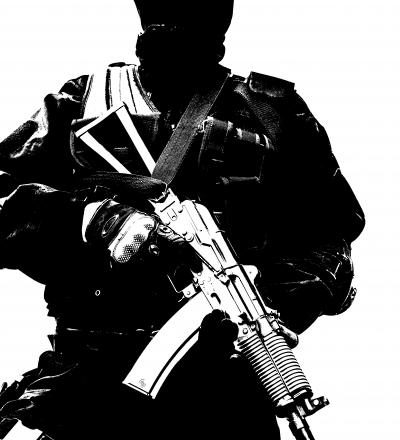A nation must think before it acts.
Humanities and Social Sciences Online
Paul Shemella is a retired US Navy captain teaching at the Naval Postgraduate School in Monterey, California, and a fellow at the Center for Civil-Military Relations (CCMR). His military career was largely spent in the counterterrorism field as a special operations officer. Thus, Shemella combines an academic understanding of the history of terrorism with practical knowledge of counterterrorism operations, making him the ideal editor for a work of this type. Shemella has brought together a group of eight authors, all associated with the CCMR, to create an excellent one-volume guide to the nature of terror organizations, the most important elements of government responses to them, and a series of case studies to illustrate the primary points the authors raise. Shemella contributes four chapters to the work, in addition to the introduction and conclusion, and his influence can be seen throughout the collection, as there is a clear narrative thread that is maintained between the authors that is often missing from edited volumes of this type. In short, this is an excellent work, and one that should prove exceedingly useful to any instructor leading a course on terrorism, whether they are directly related to military education or not.
The first part, comprising six chapters, lays out the authors’ explanations for what terrorism is and what primary forms it takes in the twenty-first century. Thomas Mockaitis begins by clearly defining terror organizations, both in terms of their own behavior and motivations and as a different form of group than organized crime or insurgencies. Phil Williams then offers a chapter that explains the different network structures used by most terror organizations, and the advantages and disadvantages of hierarchical, cellular, and formless networks. He also offers an explanation of the funding mechanisms utilized by terrorists, and shows how they might be both identified and curtailed by government entities. Timothy Doorey’s sole chapter describes cyber terrorism, as well as the role of Internet communications in the creation, funding, oversight, and combatting of terror organizations. Peter Chalk’s only chapter follows, with an analysis of maritime terror, including the importance of piracy, international shipping attacks, and the possible uses of maritime approaches for the infiltration of terror operators into otherwise secure territories. Edward Hoffer concludes the first section with a chapter on the role of weapons of mass destruction in terrorist movements, and the likelihood of a terror organization obtaining and using such devices.
In part 2, the authors provide a detailed overview of the options for responses to terrorism. James Petroni begins the discussion by presenting a model by which governments might engage in risk assessment to put their resources into the most advantageous position to combat terrorism. While the chapter is entirely reliant on game theory, which can be proscriptive in requiring subjective judgments to be substituted for objective analysis, the concept is a useful discussion point. Shemella then offers an explanation of the primary tools and strategies available to most governments that wish to fight back against terror. He also shows that building effective counterterrorism organizations requires new paradigms, particularly in emerging democracies that do not have a long history of open government. Lawrence Cline discusses the importance of interagency cooperation and collective decision making in fighting against terrorism, moving from the broad challenges associated with coordination to specific arguments about the key role of leaders in the planning process. Shemella’s next chapter examines the specific challenges of combatting ideology, beginning with an analysis of the root causes of terror motivations. Cline then analyzes the importance of intelligence organizations and building their capacity as a means to combat terrorism before major attacks can be carried out. In contrast, Hoffer’s next chapter argues that terror attacks will continue to wreak havoc, and thus governments must devote scarce resources to planning for disaster response in the aftermath of an attack. Robert Schoultz walks through the ethics of counterterrorism, and perhaps most important, he explains why it is vital to engage in ethical behavior while combatting organizations that have no such compunctions. Shemella concludes the section by demonstrating the difficulty of measuring effectiveness in counterterrorism campaigns.
The final section is a series of case studies that examine many of the issues raised in earlier parts of the collection. The case studies cover Somalia and the rise of Al Shabaab, the Tokyo subway sarin gas attack by Aum Shinrikyo, the Madrid bombings carried out by Al Qaeda in the Islamic Maghreb, the Mumbai attacks launched by Lashkar-e-Taiba, the history of the Irish Republican Army, and the franchising problem created by Al Qaeda in the Arabian Peninsula and other related groups. Each of the case studies is well written and well documented, and most address more than one of the subjects of previous chapters from the first two parts of the book. These case studies are presented in a somewhat haphazard order, meaning any instructor who adopts this as a required text is likely to have students read the chapters out of order. Nevertheless, that is a minor quibble when compared to the excellence of the work as a whole and is not a negative reflection on the authors or the editor.
Continue reading, Fighting Back: What Governments Can Do about Terrorism.




